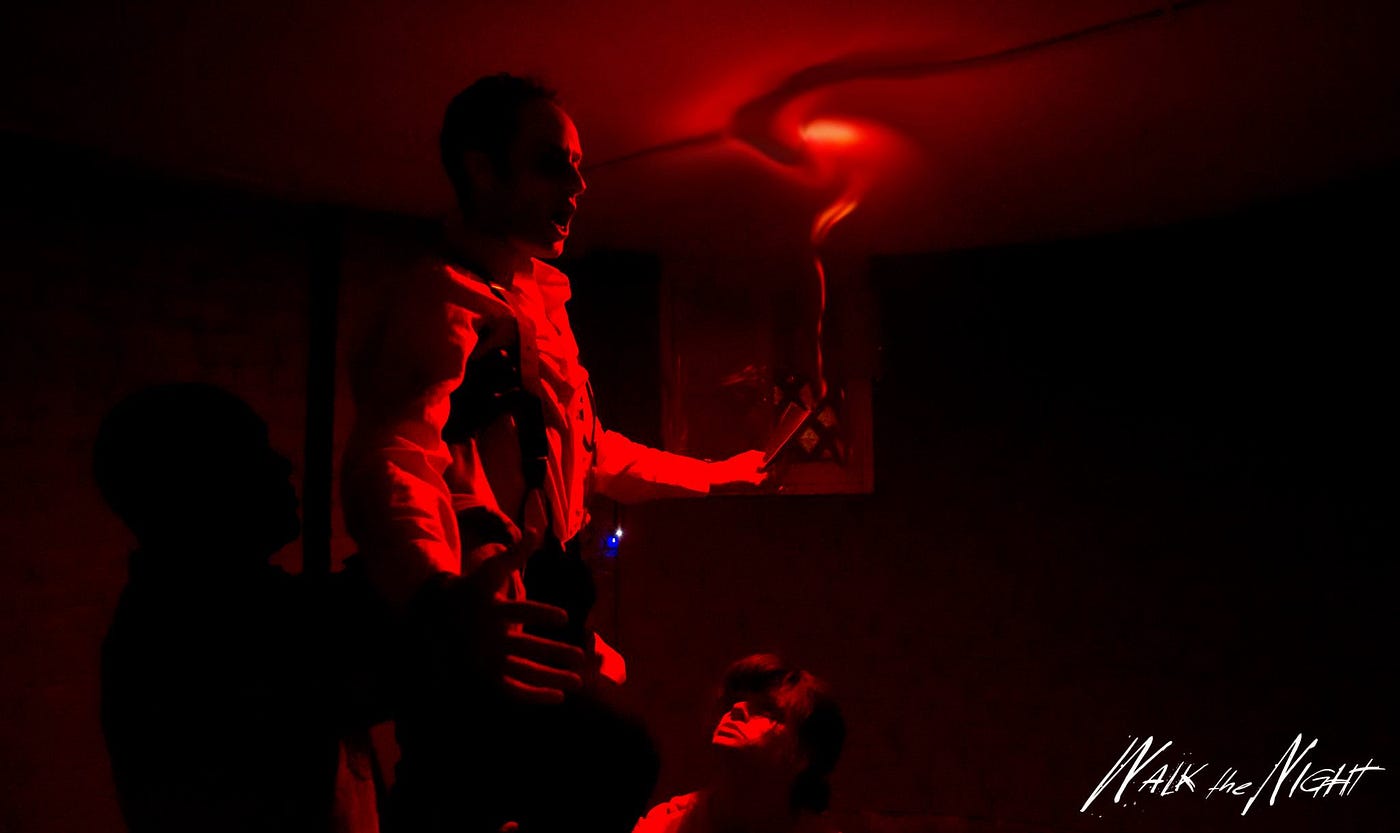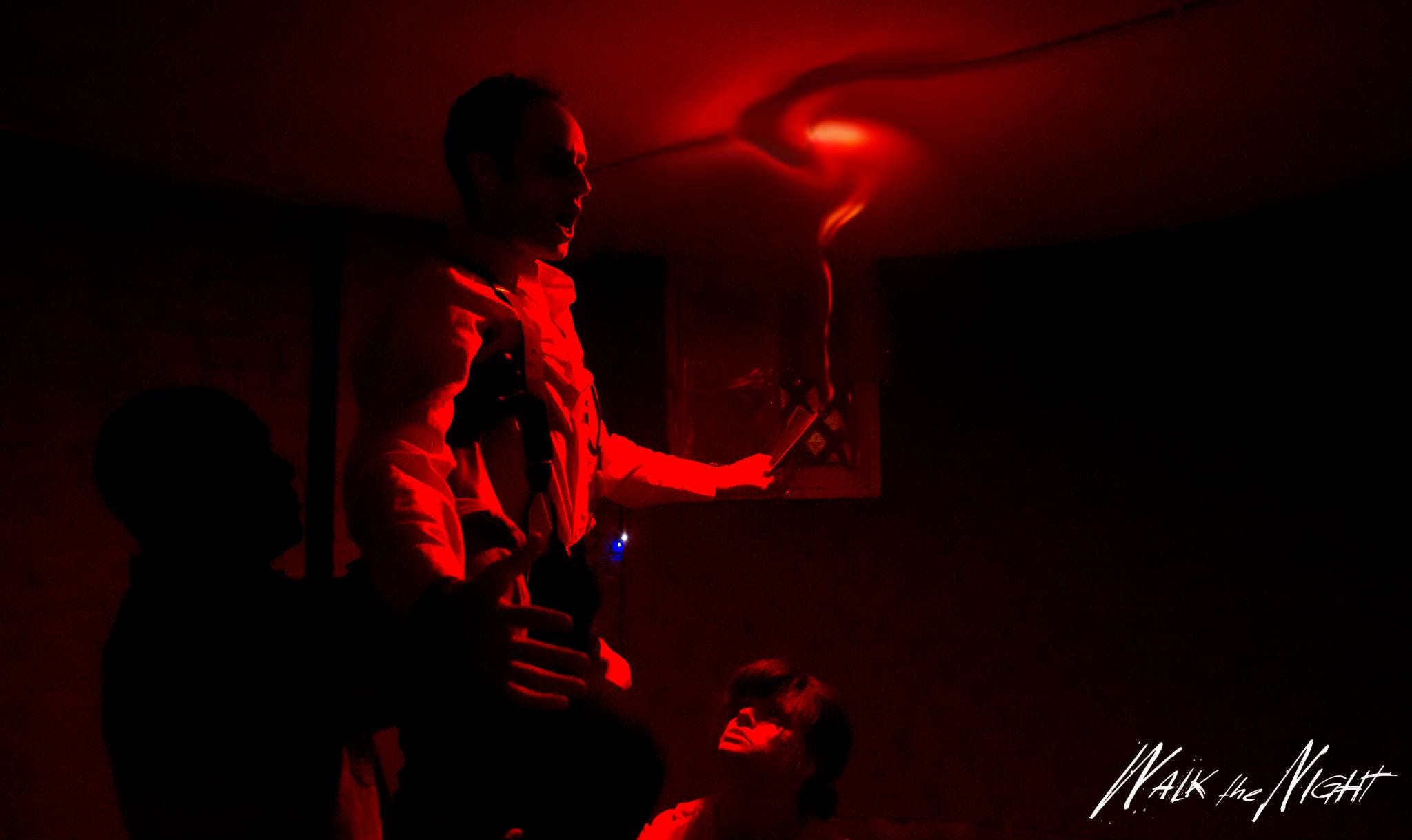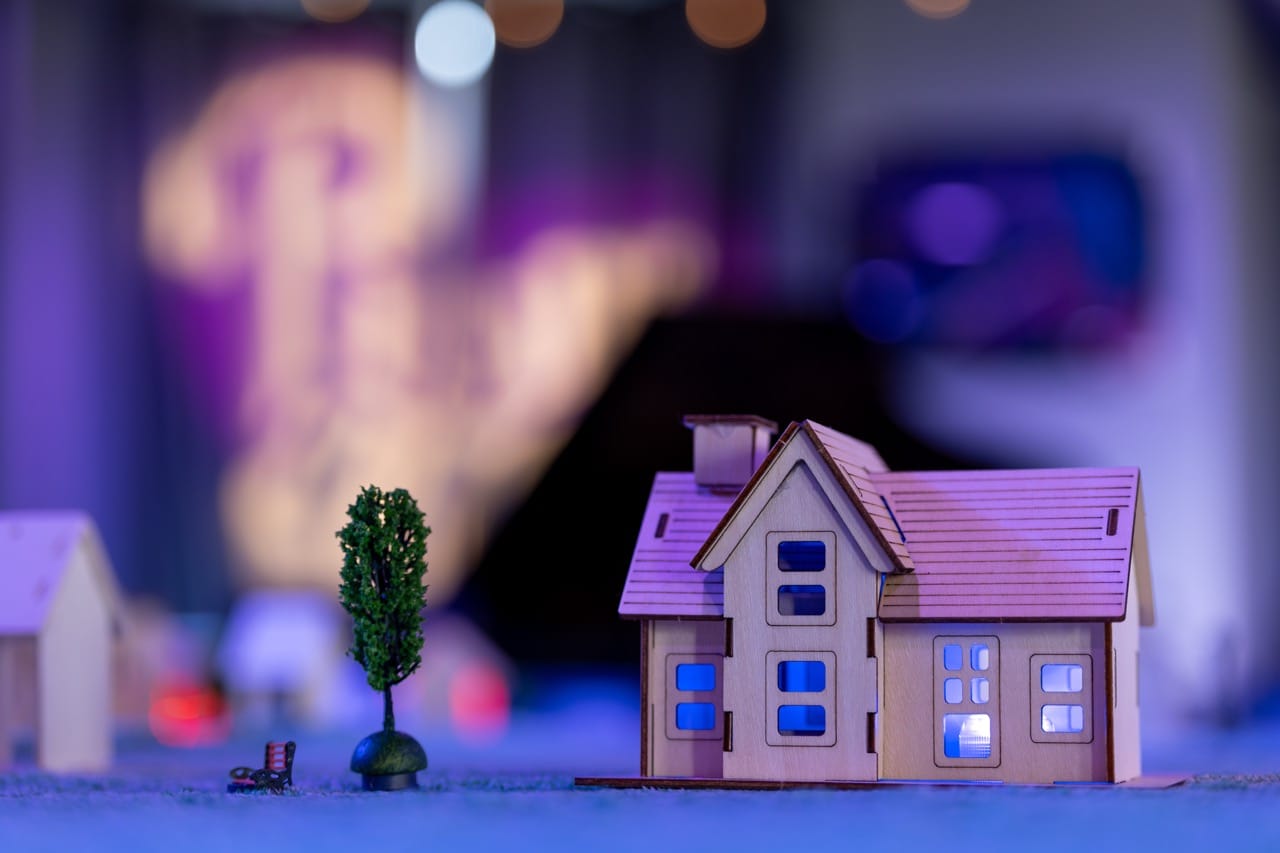
It is all too easy to think of the American immersive renaissance as something that happens on the coasts: East, West, Gulf, and Great Lakes.
Those who do would, of course, be wrong.
From the spread of escape rooms in every city to the work of theatre companies like Serenbe Playhouse in Atlanta, to the immersive playground Meow Wolf in Santa Fe the evolution of the immersive form is taking place in every kind of locale imaginable.
Which brings us to Omaha, Nebraska.
Those who know Omaha know that it is a financial capital — between Mutual of Omaha and Warren Buffett it punches above the weight of other cities with less than a half-million people.
What people might not know is that for the past few years Omaha has been the home of Walk The Night, a theatre company that has been transforming Shakespeare’s classics into immersive experiences. We spoke with the Producing Artistic Director of Walk The Night, Spencer Williams, about the company and this year’s offering: Death Marked Love, based on the Bard’s Romeo & Juliet.
No Proscenium: For those who don’t know Walk the Night, could you give us a quick breakdown of that the company is about?
Spencer Williams: Happy to! Walk the Night, as a company, focuses on haunting, emotional, immersive, site-specific adaptations of commonly known narratives — “an ancient story, as told by its ghosts.” So far, we’ve done a different Shakespearean piece every year (Titus; Hamlet; Lear; Midsummer; and now R&J). Format-wise, we’re sandbox-style, plots set in real-time, with emphasis on narrative accessibility: we try to cover a spectrum of audience experience; we allow traditional audience members (those who want a specific narrative context), to be able to easily access that narrative choice; we allow the adventurous to discover deeper, more intimate meanings related to the plot. Our audiences know, at a minimum, “What happened here, this night” and everyone will have their own unique perspective of it.
NP: You’ve done these Shakespearean adaptions a few times now, what have you learned from the previous iterations of the show?
SW: The simple answer is “human behavior.” But the full one… I love that you asked this because, as most of us theatre-geeks know, Shakespeare’s English is as different a language from our own as Barcelona’s Catalan is from Spanish: there are parallels, and similar roots/vocabulary, but understanding one does not mean you will understand the other, certainly not offhand. On top of that, it’s poetry of a different language, so there’s a second level of abstraction. Added, of course, is what we all know in making immersive theatre: we’re giving intimacy and choice to an audience and often taking away traditional theatrical expectations (our audiences, like we ourselves, are surfing; even good surfers know that no two waves are alike.)…
At the same time, however, those plot structures are pretty well ingrained in western culture. So, the way I see it, we’re dancing with our audience, not playing for them at a concert, but if folks don’t know the song, they can still pick up on the rhythm — or at least move a little.
People really tap into their instincts in that scenario. You can see it in the way they move and interact during a show, and we have to foster and adjust to that. Shakespearean language-wise, I was lucky to have a mentor, Bill Rauch, whose examples in Shakespeare show us to not be afraid of cuts, to emphasize and frame the metaphors that connect and serve the story rather than just sound pretty — that we’re carving out a sculpture, not painting by numbers; that to avoid artifice, those metaphors have to truly mean something to the performer. So we definitely do that work — and take a lot of liberty (to the extent that we base the work on the play, but do not claim we are staging it). But even then, with immersive you’re working with audiences who are juggling listening and visual comprehension with choice and movement. Which brings me to human behavior…
We just plain need to meet an audience on their terms, not ours. When theatrical norms are taken away, and even language can’t be relied on alone… The continual growing process for me, is learning not only time and again that there is no wrong way to experience a piece, but… that each production, atmosphere, content, etc. reveal more and more ways audiences can react to what we do, instinctively. To start the list of lessons coming from that: the difference in what audiences think they want versus what they actually want; how familiarity and context exist on a spectrum; how game theory, group mind, and tipping points interplay with chemistry, environment, and more. To have the most effect, while giving the greatest level of organic interaction, we’ve had to commit to that changing human variable. Because all of these effect the flow of 15–150 people in a given space. That’s the difference between herding cattle and inspiring movement — or a crappy concert in a crappy venue vs the almost-out-of-body, amazing immersive experience…
Get Noah J Nelson’s stories in your inbox
Join Medium for free to get updates from this writer.
SubscribeSubscribe
NP: What’s your approach to immersive theatre?
SW: My own work starts with connection & honesty over polish (not to say we don’t set things, of course): the characters are molded to the actors rather than the other way around; the plot is molded to the site, rather than the other way around. I felt a breakthrough in the work as a director when I realized that “vision” is as much about working with what’s in front of you (ensemble, site, audience, etc.) as it is an ability to see a goal in the future. You direct the piece you have, not the piece you “want.” That applies to an approach to the work, and for another major element of what we do: counter-type/diversity casting (I’m a white guy from a mixed-race family, so representation is very important to me). In my case, intimate honesty and diversity go hand-in-hand: not to find/make a collaborator fit a type, but to see what their unique voice brings to a character (including influencing and creating content). And all of that allows work that taps into the poetic and narrative pieces that resonate with me: like reading a Faulkner novel in college to feel a character witnessing major events, watching and rewatching The Usual Suspects time and again to relive and retrace what was an amazing trick, or going to Disneyland as a kid and experiencing what I felt was pure magic.
NP: Omaha isn’t really on the immersive map in most people’s heads — what has been the reaction from the local audience to the work?
SW: Yes, Walk the Night has been produced and directed in areas where immersive theatre is not nearly as prevalent, compared to major population centers. It’s been a real treat to bounce back and forth from LA, where the community is buzzing and saturated, to where it’s starting to take hold — both for audiences and collaborators. We also base our funding from grant money on educational programs, which has meant I’ve seen the effects of immersive theatre on high school to college kids. Over the five years, our audience size has grown incrementally, and is definitely connected with that younger generation, who are instinctively used to interactive entertainment (on their phones/computers/pads) rather than a television/theatre.
You can see the reaction right in front of you: performance-to-performance, people will start with trepidation, farther away from action in front of them, but by the end they’ll be closer to the action, engrossed in it. And year-to-year, the time between hesitation and engagement has gotten shorter and shorter. We get more and more repeat viewers, returning for each run, each year. We have people in our company now who have changed the course of their lives because of the work going on in the immersive world (around the country, not just with us, here). The first year, people came and collaborated or watched who’d maybe heard of immersive theatre. This year, fresh faces came in to audition because they’ve seen it and are excited by it; and people have inquired about what we do for the same reason. It’s a testament to what everyone is doing in the genre throughout the country, and wonderful to see emerge.
NP: Is there an idealized Walk the Night production in your head, or is discovery and exploration a big part of your process?
SW: Both (though, I’d lean towards exploration)! The idealized production is a feeling that we, the audience, are witnessing these characters’ stories. Production-wise, in early stages, on my end, that feels like excavating a fossil: you know the bones, the connecting points, and the overall shape. But the goal is that you feel something emerge in front of you that fits the skeleton as much as it is completely unexpected. You know the way a harmony hits you, when you’ve only been hearing the melody for a while? Or how a rhythm shift changes the way a song feels? That’s what we’re looking for, and that’s the feeling that we hope to give the audience, too… Hokey, I know — but true…
NP: What can folks expect from Death Marked Love?
SW: This year, we have a number of things I’m excited about!
-Along with our usual format, we’ve been developing a style of introduction that is more interactive and individualized to each audience member.
-Prologue shows at a separate location that give guidance and hints on how someone’s predispositions/inner nature might make them want to start the main show (the place, the person they should seek, etc.)
-A gamification track, with not just intimacy but interactivity that can lead to tokens, which provide deeper access to moments in the plot.
-A beautiful venue, which is an uninhabited nature center in the middle of a large state park, with some amazing surprises.
-An audio prologue that can be played in your car, specifically timed with the drive to the show (there is eventually only one road to be able to get to the venue, and we’ve taken the opportunity to incorporate it with the experience)
-Live music, woven into the story…
…I’ll stop myself there.
Walk The Night’s Death Marked Love plays Thursday October 5th through Sunday October 29th (Thursdays — Sundays) at the Neale Woods Nature Center; 14323 Edith Marie Avenue Omaha, NE. Tickets are $20 — $45 dollars.















Discussion